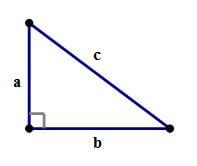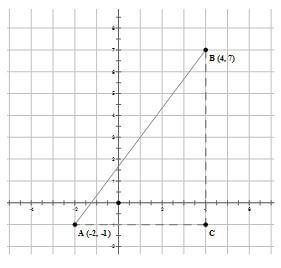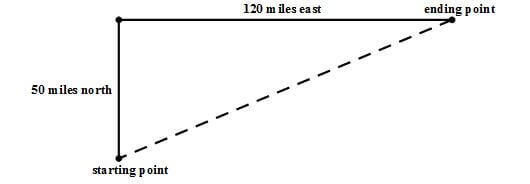
There’s a reason this is the most famous theorem in mathematics! This remarkable theorem is one of the most versatile and highly adaptable formulas in existence. Of course, I’m sure you remember that it says: For any right triangle,

Of course, if any question gives you two sides of a right triangle and asks you to find the third, you will use this formula. Here are a couple problems to show its other guises.

Q1. In the coordinate plane,
(A)
(B)
(C)
(D)
(E)
Q2. Paul drove
(A)
(B)
(C)
(D)
(E)
Q1. The easiest distances to find in the coordinate plane are the horizontal and vertical lines, so we begin by drawing those.

For the lengths of
Answer = A
Q2. Essentially, Paul drove along the legs of a big right triangle, and the hypotenuse is how far he is from his starting point.

Therefore,
Answer = C